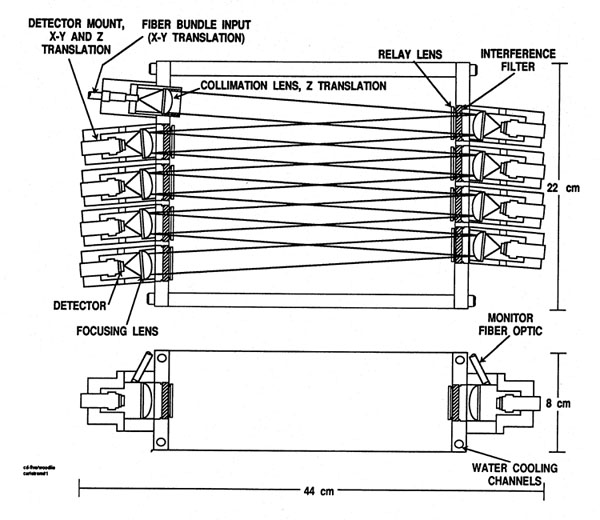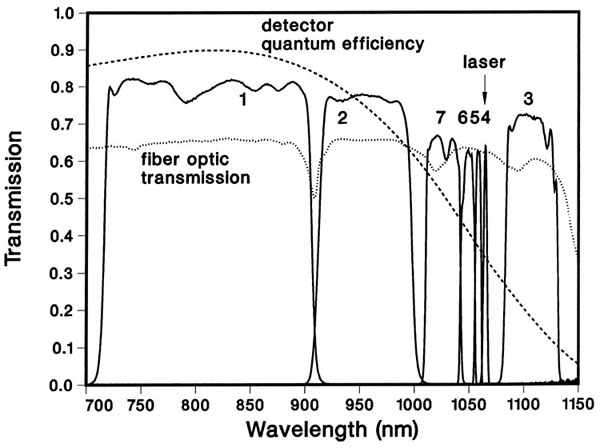Polychromator Design Description
Light is introduced to the polychromator via a fiber optic bundle and is cascaded through a series of bandpass interference filters and relay lenses which are mounted on two precision parallel rails. Optimization of the optical components leads to a compact design and reduces the angle of incidence and the cone angle of light seen by the filter to a minimum, an important factor for narrow band filters. For performance monitoring, each detector has an SMA fiber optic connector and lens so that light may be introduced via a fiber optic, bypassing the interference filter. This feature is useful for testing purposes and for measuring changes in the detector sensitivity.
Preamplifier Module

A preamplifier module has been developed to maximize the signal-to-noise ratio for Thomson scattering experiments on the DIII-D tokamak. It utilizes pulse integration and delayline subtraction of the background plasma light. The pulse integration improves the signal-to-noise ratio in the presence of background light, an important feature for Thomson scattering measurements. The delay-line subtraction allows the full range of the recording digitizer for the scattered light alone, thereby improving the dynamic range of the system.
Features of this preamplifier module include on-board power supply regulation, RF shielding, low noise amplifiers, programmable DC gain, and dual outputs for signal and background measurements. A recording digitizer is used to monitor the Thomson scattering signals from the laser pulse. A second recording digitizer is used to monitor the plasma background light level on the DC channel. This channel can be used to accurately estimate the measurement error due to the background light and permits calibration of the system using standard DC light sources.

